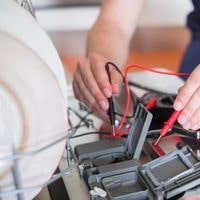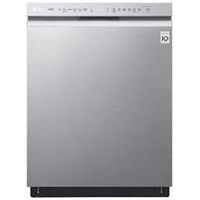LG dishwasher not draining. Dishwashers drain themselves in cycles, but it’s important to keep an eye on the puddle forming at the end of a series of cycles.
You may find yourself wasting time cleaning up excess water when there is buildup obstructing its path. Occasionally check for buildup that can be removed and residue that might need to be simply cleaned off.
LG dishwashers have exceptional drainage systems, but there are some things you should know about maintenance to ensure that you don’t catch any extra attention from your local plumber.
LG dishwasher not draining
Some dishwashers experience an inability to drain normally due to various reasons. In other instances, the same situation can be fixed with a standard repair.
Here, we’ll discuss several common causes of this problem in an effort to determine the right solution for your specific issue.
The drains pump is defective
The dishwasher pumps the water out of the machine. If the pump is not working, then the dishwater can’t drain. To figure out if you need a new pump, use a multimeter to test the continuity of the motor in it.
If it won’t pass that test, then you need to replace it to get your dishwasher working again.
Dishwashers rely on a power pump to get rid of food and grease from dirty dishes as well as any remaining water inside during its cycle.
The pump is usually located at the bottom of the dishwasher on an interior wall with many other small components in that area.
With its bell-shaped lid on top, it looks like an extra-large funnel or even a miniature rocket ship turned upside down which is looking for liquid to propel itself through space.
Broken Drain Impeller
The drain valve can become clogged
The drain valve can become clogged with debris over time. Make sure the drain valve is clean so water can flow through it.
If you discover that the drain valve is clear of debris but it still won’t actuate (that could happen because there might be an electrical problem or a weak spring inside of it), replace it. Drain valves are not repairable if they are defective, you must replace them.
Solenoid kit for drain fails
The dishwasher drain solenoid is an important part of the internal workings of a dishwasher. It is responsible for opening the drain valve so that water can flow out of the machine.
Without it, water would not be able to drain from the dishwasher and instead would sit in your appliance causing it to flood, or even worse, leak through your floors or cabinets when you don’t realize it is excessively full.
A new pump and motor assembly might be required
The motor rotates the impeller, which pushes the water out of the drain hose. If the motor starts during the drain cycle but then pauses, check for a blockage in the drainage line, near the pump inlet.
If this occurs or if it just hums when it should be operating, consider replacement of pump and assembly due to worn electrical parts and damaged seal.
The water pump belt is damaged or worn out
The water pump belt could be broken or worn out. In very few dishwashers, the water pump belt will be visible.
If your appliance does not have a visual representation of its water pump belt, search for and find your model number online to determine if it does, in fact, have a water pump belt.
To access the broken or worn-out part, remove the panel underneath the dishwasher. The likely culprit can be found on the bottom of the motor itself once successfully exposed.
Clogged drain hose
It is possible that the drain hose is clogged. Remove both the dishwasher and sink drain hoses and clean the drains out to unclog the drain hose.
The most common places for a pipe to get blocked are at the section between the drainpipes of the dishwasher and at or around where the wastewater comes out, leading to the main sewer.
A stuck check valve
In the dishwasher, a check valve allows water to drain out of the machine and prevents water from flowing back into it after the cycle is finished.
When the valve blocks this flow, it effectively stops water from draining and can cause flooding in your home.
If you find that your drain lines are clogging or if your water pipes are rusting or corroding, there may be debris built up around the check valve and restricting its function.
Cleaning will likely fix this problem if it is simply down to blockage but otherwise you should replace the check valve if cleaning does not fix it, as replacement is preferred so as not to leave you vulnerable during the operation of your dishwasher.
Related Guides
